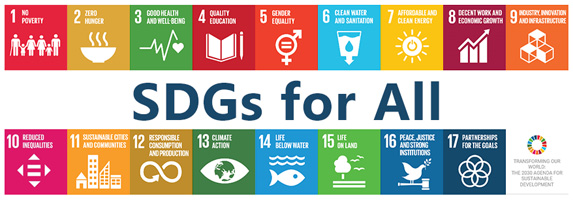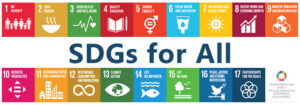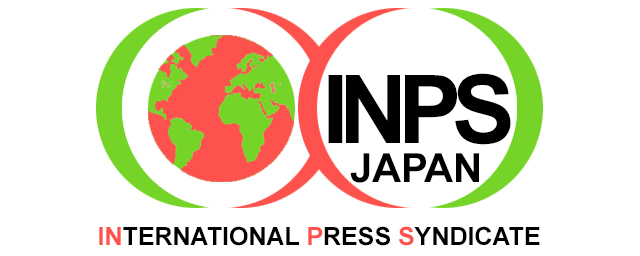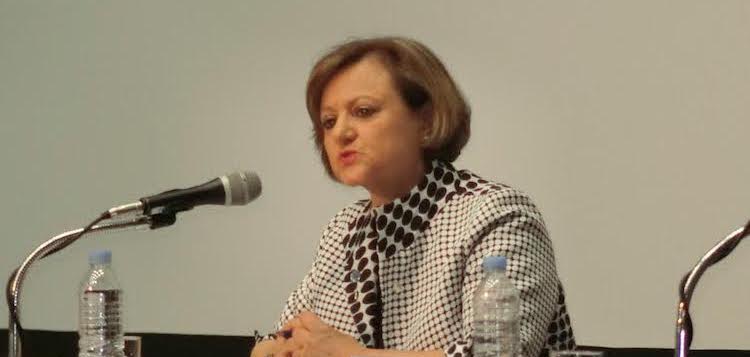Interview with Cristina Gallach, UN Under-Secretary-General for Communications and Public Information
NEW YORK (IDN) – Representatives of non-governmental organizations (NGOs) and academia adopted a global education action agenda affirming the importance of Sustainable Development Goal 4 – ensuring inclusive and equitable quality education and promoting lifelong opportunities for all – at the 66th United Nations Department of Public Information (DPI) / NGO Conference that concluded on June 1, 2016 in Gyeongju, South Korea.
What has happened since? What role are youth groups playing in the second year of implementation of Sustainable Development Goals (SDGs) endorsed by the international community in September 2015? Will there be a DPI / NGO conference in 2017 despite a new Secretary-General and management team taking office in January? What does it mean serving as Under-Secretary-General for Communications and Public Information at the United Nations? HINDI | JAPANESE | KOREAN | CHINESE
These are the questions Ramesh Jaura, Editor-in-Chief and International Correspondent of IDN, flagship agency of the International Press Syndicate (INPS) asked Cristina Gallach, Under-Secretary-General for Communications and Public Information, Department of Public Information (DPI). Read the Q&A in full:
Q: Nearly seven months ago on June 1, 2016 representatives of non-governmental organizations (NGOs) and academia adopted a global education action agenda at the UNDPI/NGO conference in Gyeongju, South Korea. What would you say has been achieved since then?
A: Last year’s Conference in Gyeongju was a milestone moment in the UN’s engagement with civil society. We had an unprecedented number of participants from NGOs, but also academics, students and youth groups as well. There is now an increasing recognition of the critical importance that education plays in achieving all of the goals in the 2030 Agenda.
DPI has been sharing the Gyeongju Action Plan with the wider UN and NGO communities since the Conference ended, with the aim of sparking further discussions and debates about how to take forward the agenda.
Since the Conference many NGOs have been active in their own communities, working to implement the action plan and the broader 2030 Agenda. We are seeing public events and panel discussions that are helping to build awareness of the key issues. Several NGOs have formed a steering committee to try to introduce an International Day of Education for Global Citizenship to the calendar.
Q: For the first time in the history of the DPI/NGO Conference, youth also developed and issued a Youth Declaration. You pointed out then that youth had “come in great numbers, demonstrating the value that they see in partnering with the United Nations”. To what extent has partnership developed in the last seven months?
A: The relationship between the United Nations and youth continues to strengthen. We see young people as essential drivers of the sustainable development agenda, and we are increasingly turning to initiatives that harness the energy and passion of youth towards real advances and changes on the ground.
After the Conference in Gyeongju, DPI launched a NGO youth steering committee to serve as an advisory body to both the UN and civil society partners on how to better engage youth and NGO youth groups around global issues.
Every week the UN is holding numerous youth-focused events and activities worldwide, either to highlight youth actions or to encourage greater awareness and engagement so that we can find solutions to the most pressing global challenges – whether it’s climate changes or pollution, equal pay or sexual violence, ending hunger or defeating poverty.
And we have begun the process of identifying the Secretary-General’s Special Envoy on Youth, who will spearhead global advocacy efforts on behalf of youth. Ahmad Alhendawi’s term just expired and Secretary-General António Guterres is extremely keen to have a successor in place very soon. He has identified mobilizing youth and working with youth as a key objective of his mandate.
Q: Do you see any specific role for the youth in the second year of Sustainable Development Goals and beyond?
A: The world is home today to the largest generation of youth in history, with as many 1.2 billion people between the ages of 15 and 24, and that number is likely to only continue to grow. Young people are of course our leaders of tomorrow and have a critical role in shaping our collective future.
Around the world we find youth are increasingly engaged in global issues, particularly the sustainable development agenda, and looking for ways they can make a positive difference, big or small. Many are already running or piloting innovative projects and ideas in their countries or communities.
Going forward, we must continue to engage young people, and youth organizations, to make sure they are at the forefront of implementing the new agenda. Young people, in turn, must keep raising their voices and ensuring they are heard.
Q: 2017 has started with a new Secretary-General assuming office and putting together a new management team. Should we nevertheless expect a DPI/NGO Conference this year? If yes, has a venue been decided?
A: We do not anticipate holding a DPI/NGO Conference this year – we are exploring options for holding the next global conference in 2018. In the meantime, we are working with the Secretary-General’s team to ensure our work with NGOs is aligned to his substantive priorities.
Q: As your tenure as Head of the Department of Public Information comes to an end, what would you describe as the challenges you faced and the successes you achieved in making the activities of the UN known to the wider public? In how far would this experience be helpful to you in your next assignment?
A: Serving as Under-Secretary-General for Communications and Public Information at the United Nations has been such a rewarding experience. I have the privilege of leading the global team that tells the UN story to the world each day.
The challenge is how to tell that story when we live in a world – and an era – when people speak hundreds of different languages and receive news and information in countless ways, from the familiar, like radio, posters and television, to the new, like social media. We have to reach as many people as possible, in as many ways as possible, while at the same time recognising that our budgets are not increasing.
That is why the magic word is partnerships. We can move across borders and through different languages, cultures, countries and generations if we truly work in partnership with governments, NGOs, private sector, activists… and all those ready to promote the UN agenda.
I have learned something in every job I’ve had and this one is no different. For me, the depth and variety of issues that we have handled during the last two years is unique. And even more impressive is that from every corner in the world – Member States, media, civil society, business sector – there exists a genuine interest and willingness to work with the UN. The United Nations is the partner of choice, the most powerful mobilizer and the true convenor of those that want to work for a better world. [IDN-InDepthNews – 21 February 2017]
Photo: Cristina Gallach, UN Under-Secretary-General for Communications and Public Information, at a press conference in Gyeongju, South Korea on June 1, 2016. Credit: Katsuhiro Asagiri | IDN-INPS




